(S)-(+)-2-Amino-3-hydroxy-3-methylbutanoic acid
Modify Date: 2024-01-02 10:16:31
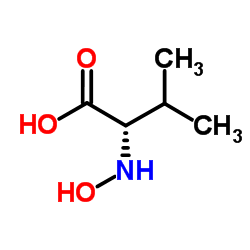
(S)-(+)-2-Amino-3-hydroxy-3-methylbutanoic acid structure
|
Common Name | (S)-(+)-2-Amino-3-hydroxy-3-methylbutanoic acid | ||
|---|---|---|---|---|
| CAS Number | 2280-27-5 | Molecular Weight | 133.146 | |
| Density | 1.2±0.1 g/cm3 | Boiling Point | 284.5±42.0 °C at 760 mmHg | |
| Molecular Formula | C5H11NO3 | Melting Point | 201 - 203ºC(decom) | |
| MSDS | N/A | Flash Point | 125.9±27.9 °C | |
| Name | (S)-(+)-2-Amino-3-hydroxy-3-methylbutanoic acid |
|---|---|
| Synonym | More Synonyms |
| Density | 1.2±0.1 g/cm3 |
|---|---|
| Boiling Point | 284.5±42.0 °C at 760 mmHg |
| Melting Point | 201 - 203ºC(decom) |
| Molecular Formula | C5H11NO3 |
| Molecular Weight | 133.146 |
| Flash Point | 125.9±27.9 °C |
| Exact Mass | 133.073898 |
| PSA | 83.55000 |
| LogP | 0.39 |
| Vapour Pressure | 0.0±1.3 mmHg at 25°C |
| Index of Refraction | 1.476 |
| Water Solubility | SOLUBLE |
Synonym:L-(+)-Hydroxyvaline Section 2 - COMPOSITION, INFORMATION ON INGREDIENTS
Risk Phrases: None Listed. Section 3 - HAZARDS IDENTIFICATION EMERGENCY OVERVIEW
The toxicological properties of this material have not been fully investigated. Potential Health Effects Eye: May cause eye irritation. The toxicological properties of this material have not been fully investigated. Skin: May cause skin irritation. The toxicological properties of this material have not been fully investigated. Ingestion: May cause gastrointestinal irritation with nausea, vomiting and diarrhea. The toxicological properties of this substance have not been fully investigated. Inhalation: May cause respiratory tract irritation. The toxicological properties of this substance have not been fully investigated. Chronic: No information found. Section 4 - FIRST AID MEASURES Eyes: Flush eyes with plenty of water for at least 15 minutes, occasionally lifting the upper and lower eyelids. Get medical aid immediately. Skin: Get medical aid. Flush skin with plenty of water for at least 15 minutes while removing contaminated clothing and shoes. Wash clothing before reuse. Ingestion: If victim is conscious and alert, give 2-4 cupfuls of milk or water. Never give anything by mouth to an unconscious person. Get medical aid immediately. Inhalation: Remove from exposure and move to fresh air immediately. If not breathing, give artificial respiration. If breathing is difficult, give oxygen. Get medical aid. Notes to Physician: Section 5 - FIRE FIGHTING MEASURES General Information: As in any fire, wear a self-contained breathing apparatus in pressure-demand, MSHA/NIOSH (approved or equivalent), and full protective gear. During a fire, irritating and highly toxic gases may be generated by thermal decomposition or combustion. Extinguishing Media: Use water spray, dry chemical, carbon dioxide, or appropriate foam. Section 6 - ACCIDENTAL RELEASE MEASURES General Information: Use proper personal protective equipment as indicated in Section 8. Spills/Leaks: Vacuum or sweep up material and place into a suitable disposal container. Avoid generating dusty conditions. Provide ventilation. Section 7 - HANDLING and STORAGE Handling: Wash thoroughly after handling. Use with adequate ventilation. Minimize dust generation and accumulation. Avoid contact with eyes, skin, and clothing. Keep container tightly closed. Avoid breathing dust. Storage: Store in a tightly closed container. Store in a cool, dry, well-ventilated area away from incompatible substances. Store protected from moisture. Section 8 - EXPOSURE CONTROLS, PERSONAL PROTECTION Engineering Controls: Use adequate ventilation to keep airborne concentrations low. Exposure Limits CAS# 2280-27-5: Personal Protective Equipment Eyes: Wear appropriate protective eyeglasses or chemical safety goggles as described by OSHA's eye and face protection regulations in 29 CFR 1910.133 or European Standard EN166. Skin: Wear appropriate protective gloves to prevent skin exposure. Clothing: Wear appropriate protective clothing to prevent skin exposure. Respirators: Follow the OSHA respirator regulations found in 29 CFR 1910.134 or European Standard EN 149. Use a NIOSH/MSHA or European Standard EN 149 approved respirator if exposure limits are exceeded or if irritation or other symptoms are experienced. Section 9 - PHYSICAL AND CHEMICAL PROPERTIES Physical State: Solid Color: Not available. Odor: Not available. pH: Not available. Vapor Pressure: Not available. Viscosity: Not available. Boiling Point: Not available. Freezing/Melting Point: 201-203 deg C (dec) Autoignition Temperature: Not available. Flash Point: Not available. Explosion Limits, lower: N/A Explosion Limits, upper: N/A Decomposition Temperature: 201-203 deg C Solubility in water: Specific Gravity/Density: Molecular Formula: C5H11NO3 Molecular Weight: 133.15 Section 10 - STABILITY AND REACTIVITY Chemical Stability: Stability unknown. Conditions to Avoid: Dust generation, moisture, excess heat. Incompatibilities with Other Materials: Strong oxidizing agents. Hazardous Decomposition Products: Nitrogen oxides, carbon monoxide, carbon dioxide. Hazardous Polymerization: Has not been reported Section 11 - TOXICOLOGICAL INFORMATION RTECS#: CAS# 2280-27-5 unlisted. LD50/LC50: Not available. Carcinogenicity: 3-Hydroxy-L-valine - Not listed by ACGIH, IARC, or NTP. Section 12 - ECOLOGICAL INFORMATION Section 13 - DISPOSAL CONSIDERATIONS Dispose of in a manner consistent with federal, state, and local regulations. Section 14 - TRANSPORT INFORMATION IATA Shipping Name: Not regulated. Hazard Class: UN Number: Packing Group: IMO Shipping Name: Not regulated. Hazard Class: UN Number: Packing Group: RID/ADR Shipping Name: Not regulated. Hazard Class: UN Number: Packing group: Section 15 - REGULATORY INFORMATION European/International Regulations European Labeling in Accordance with EC Directives Hazard Symbols: Not available. Risk Phrases: Safety Phrases: S 24/25 Avoid contact with skin and eyes. WGK (Water Danger/Protection) CAS# 2280-27-5: No information available. Canada None of the chemicals in this product are listed on the DSL/NDSL list. CAS# 2280-27-5 is not listed on Canada's Ingredient Disclosure List. US FEDERAL TSCA CAS# 2280-27-5 is not listed on the TSCA inventory. It is for research and development use only. SECTION 16 - ADDITIONAL INFORMATION N/A |
| Safety Phrases | S24/25 |
|---|---|
| HS Code | 2922509090 |
|
~% 
(S)-(+)-2-Amino... CAS#:2280-27-5 |
| Literature: US4486600 A1, ; |
|
~% 
(S)-(+)-2-Amino... CAS#:2280-27-5
Detail
|
| Literature: Journal of the American Chemical Society, , vol. 107, # 14 p. 4252 - 4259 |
|
~% 
(S)-(+)-2-Amino... CAS#:2280-27-5
Detail
|
| Literature: Journal of the American Chemical Society, , vol. 107, # 14 p. 4252 - 4259 |
|
~% 
(S)-(+)-2-Amino... CAS#:2280-27-5 |
| Literature: Canadian Journal of Chemistry, , vol. 47, p. 1029 - 1036 |
|
~% 
(S)-(+)-2-Amino... CAS#:2280-27-5 |
| Literature: Nature Chemistry, , vol. 2, # 4 p. 280 - 285 |
|
~% 
(S)-(+)-2-Amino... CAS#:2280-27-5 |
| Literature: Canadian Journal of Chemistry, , vol. 47, p. 1029 - 1036 |
| Precursor 8 | |
|---|---|
| DownStream 3 | |
| HS Code | 2922509090 |
|---|---|
| Summary | 2922509090. other amino-alcohol-phenols, amino-acid-phenols and other amino-compounds with oxygen function. VAT:17.0%. Tax rebate rate:13.0%. . MFN tariff:6.5%. General tariff:30.0% |
| MFCD00800535 |
| 3-Hydroxy-L-valine |
| l-hydroxyvaline |
| 4-Methyl-L-threonine |
| L-Valine, N-hydroxy- |
| L-Threonine, 3-methyl- |
| (S)-2-Amino-3-Hydroxy-3-Methylbutanoic Acid |
| 2-amino-3-hydroxy-3-methylbutanoic acid |
| N-Hydroxy-L-valine |
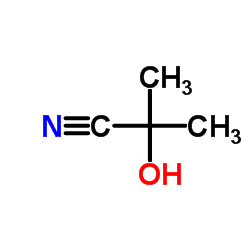

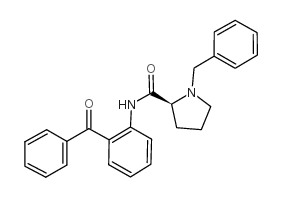
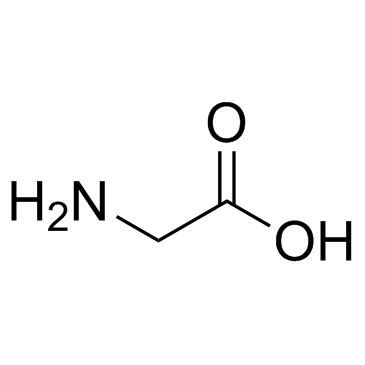
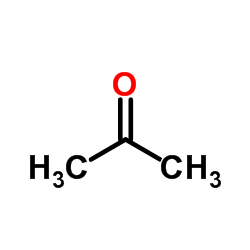
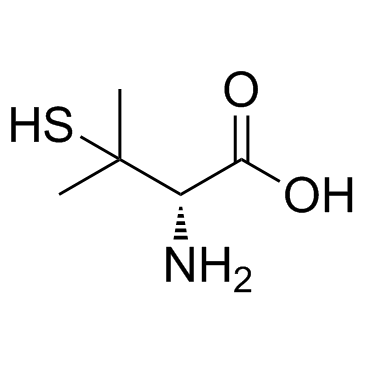

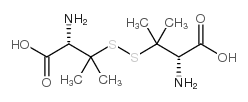
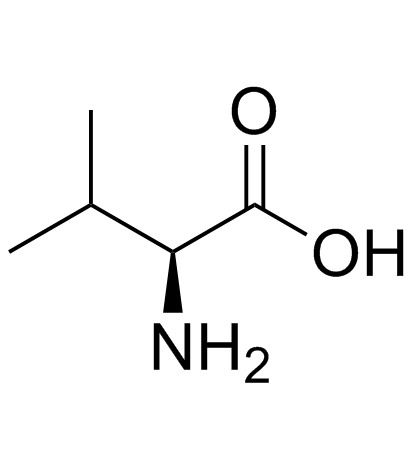 CAS#:72-18-4
CAS#:72-18-4
